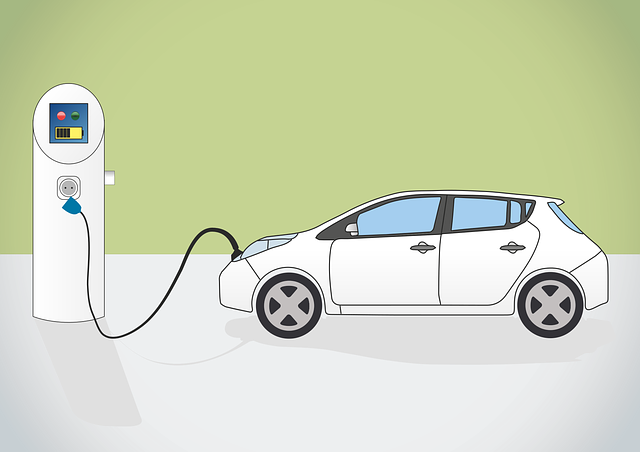Looking to register your car in California? This comprehensive guide walks you through every step. From understanding eligibility requirements, gathering essential documents, and visiting the DMV, to verifying your Vehicle Identification Number (VIN) accuracy and paying registration fees. We’ve got you covered. Ensure a smooth process with our detailed instructions, including tips on using a reliable dmv vin verifier for added peace of mind.
- Understand Eligibility Requirements for Car Registration
- Gather Necessary Documents for Car Registration
- Visit the DMV and Complete Application Process
- Verify Vehicle Identification Number (VIN) Accuracy
- Pay Registration Fees and Receive Your Registration Documents
Understand Eligibility Requirements for Car Registration

Before you begin the registration process, it’s crucial to understand if your vehicle is eligible for registration in California. The Department of Motor Vehicles (DMV) has specific requirements that all vehicles must meet before they can be legally registered. One key step is ensuring the car’s Vehicle Identification Number (VIN) passes a verification process. This can be done through a DMV VIN verifier, which checks the VIN against state records to confirm its authenticity and history.
Additionally, you’ll need to ensure that your vehicle complies with all safety standards and emissions regulations set by the state. Other eligibility factors may include proof of insurance, ownership documentation, and possibly additional fees based on the type and age of your vehicle. For convenience, many Californians opt for a mobile VIN inspection or mobile VIN verification service to streamline this initial check and make the registration process smoother.
Gather Necessary Documents for Car Registration

Before you start the registration process, make sure you have all the required documents ready. The California Department of Motor Vehicles (DMV) requires several key pieces of information to ensure a smooth and accurate car registration. This includes your vehicle’s Vehicle Identification Number (VIN), which can be easily verified through a DMV VIN verifier or a mobile VIN inspection app for added convenience.
Gathering these documents early on saves time and prevents any delays during the registration process. Always carry your driver’s license, proof of insurance, and a completed title application if you’re transferring ownership. Additionally, have your vehicle’s maintenance records handy, as some dealerships offer a mobile VIN inspection service that can be used to check the vehicle’s history for potential issues or accidents, further streamlining the registration procedure.
Visit the DMV and Complete Application Process

To register your car in California, the first step is to visit a Department of Motor Vehicles (DMV) office. Bring all necessary documents, including proof of ownership, vehicle identification number (VIN), and any relevant paperwork from previous registrations or titles. A DMV representative will guide you through the application process, which involves filling out forms and providing additional information like proof of insurance and identity.
During this process, consider utilizing a DMV VIN verifier to ensure all details are accurate. This can be done on-site or even through mobile vin inspection services that offer convenience for busy individuals. With these options, you can streamline the registration process, ensuring your car’s information is correctly verified, which is crucial for a seamless and efficient California vehicle registration experience.
Verify Vehicle Identification Number (VIN) Accuracy

Before registering your car in California, it’s crucial to ensure the Vehicle Identification Number (VIN) is accurate and valid. This unique 17-character code is a vital component in identifying your vehicle and can be easily verified using a DMV VIN verifier or even a mobile vin inspection. Accurate VIN information is essential for completing your registration process, as it helps to prevent fraud and ensures you’re providing correct details about the car.
A reliable method for checking the VIN accuracy is through a mobile vin verification service. These tools allow you to quickly scan and validate the VIN by comparing it against official databases. This modern approach saves time and effort compared to traditional methods, making it an efficient way to prepare your vehicle for registration with the California DMV.
Pay Registration Fees and Receive Your Registration Documents

After completing your vehicle’s inspection and ensuring all necessary repairs are made, it’s time to pay the registration fees. The California Department of Motor Vehicles (DMV) charges a fee for registering a vehicle, which includes a base cost plus additional fees based on your vehicle’s type and emissions status. You can pay these fees online, by phone, or in person at any DMV office. Upon payment, you will receive your registration documents, including a Certificate of Registration and a Vehicle Identification Number (VIN) verifier. This VIN verifier is crucial for proving the authenticity of your vehicle’s identification number, which is essential for legal and safety reasons.
The process can be streamlined by utilizing a mobile vin verification service. These services allow you to check your vehicle’s history and perform a vin inspection right from your smartphone or tablet. A mobile vin verifier can help ensure that your car has not been reported stolen, has no outstanding recalls, and meets all necessary safety standards. This is particularly useful if you’re registering an out-of-state vehicle or dealing with a private sale, making the entire registration process more efficient and convenient.
Registering a car in California involves understanding eligibility criteria, gathering essential documents, visiting the DMV, verifying your vehicle’s Identification Number (VIN) using a reliable VIN verifier like a dmv vin scanner, paying registration fees, and receiving your official registration documents. This process ensures your vehicle complies with state regulations, enabling you to legally operate it on California roads.
